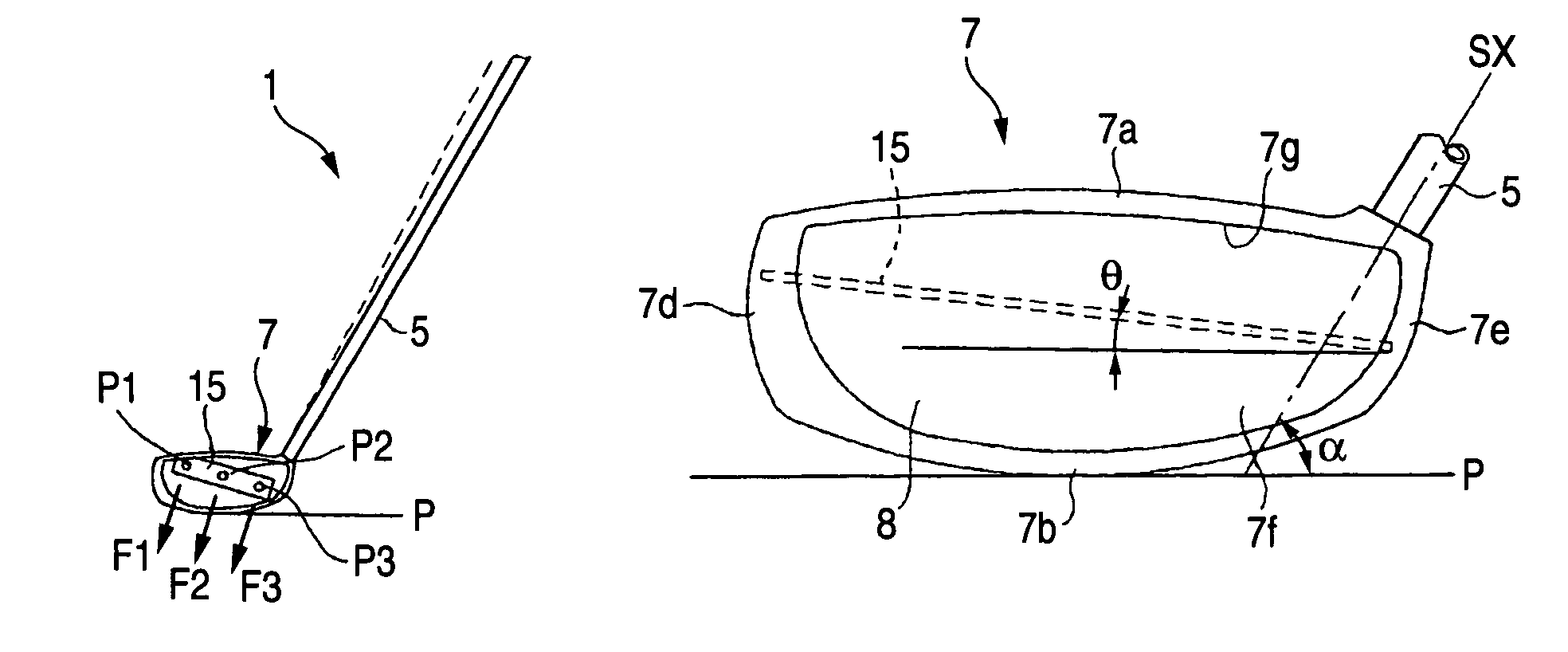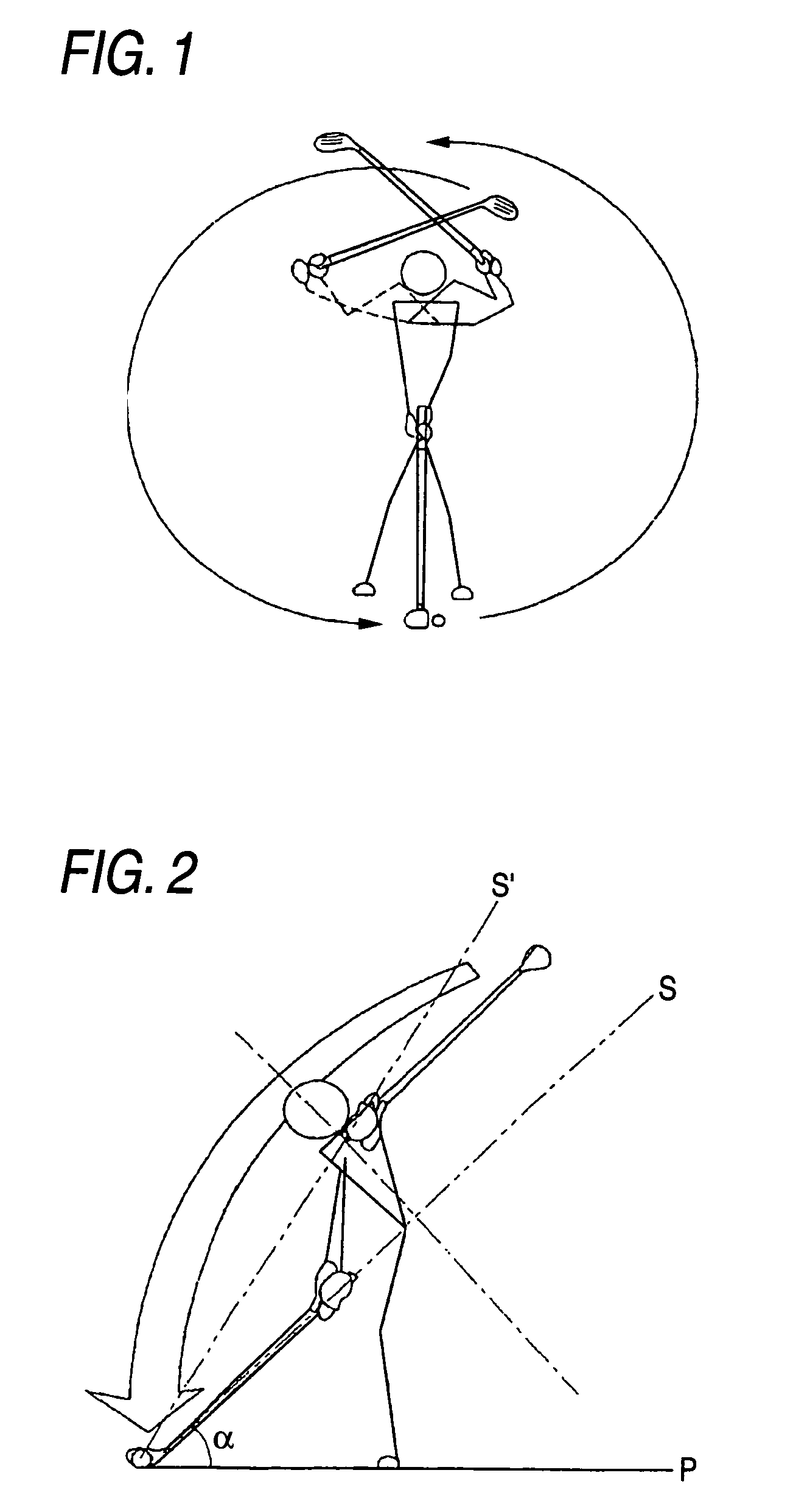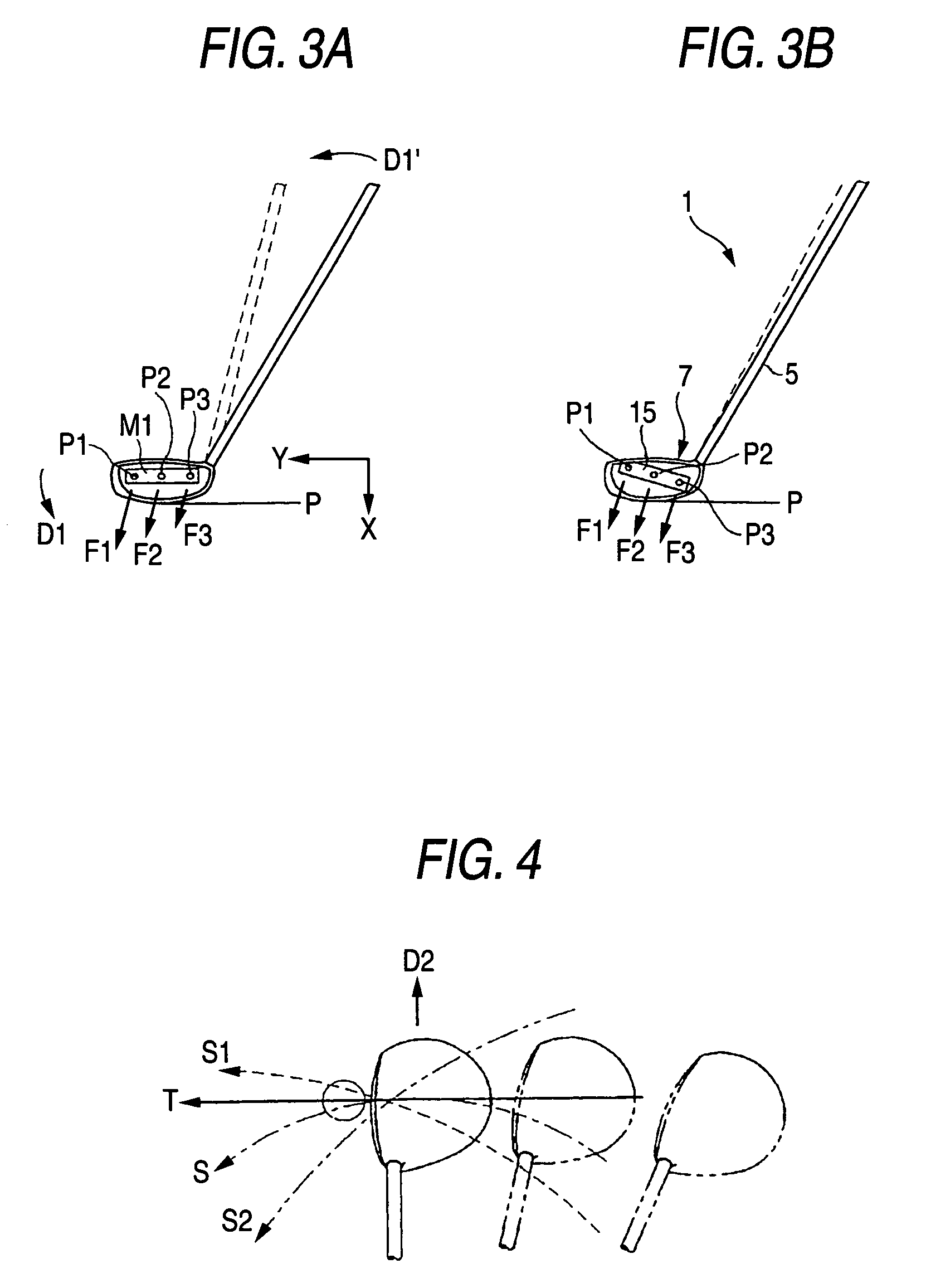Golf club
a golf club and wood-type technology, applied in golf clubs, golf, sport apparatus, etc., can solve the problems of unstable swing plane, difficulty in catching balls at predetermined positions, and disruption of the realization of a stable swing plan
- Summary
- Abstract
- Description
- Claims
- Application Information
AI Technical Summary
Benefits of technology
Problems solved by technology
Method used
Image
Examples
first embodiment
[0039]FIGS. 5 to 10 are drawings which show a golf club according to the invention, in which FIG. 5 is a front view of the golf club, FIG. 6 is an enlarged view of a head portion, FIG. 7 is a plan view which shows a partially cutaway crown portion of the head portion, FIG. 8 shows the head portion as seen from a back portion side thereof, FIG. 9 is a sectional view taken along the line A-A in FIG. 7, and FIG. 10 is a sectional view taken along the line B-B in FIG. 7.
[0040]A golf club 1 according to the embodiment includes a head 7 with a hollow outer shell construction that is securely fastened to a distal end of a shaft 5 and which is made up of a crown portion 7a, a sole portion 7b, a back portion 7c, a toe portion 7d, a heal portion 7e and a face portion 7f which hits a ball. In this case, in the head 7 of the embodiment, a substantially rectangular opening 7g is formed in the face portion 7f, and a face member 8 is securely fastened in the opening 7g so formed by virtue of fusio...
second embodiment
[0057]FIGS. 14 to 18 show the invention, in which FIG. 14 is a front view of a head that is to be mounted on a shaft, FIG. 15 is a plan view which shows a partially cutaway crown portion of a head portion, FIG. 16 is a sectional view taken along the line D-D in FIG. 15, FIG. 17 is a sectional view taken along the line C-C in FIG. 14, and FIG. 18 shows the head portion as seen from a back portion side thereof.
[0058]This embodiment is configured so as to be suitably applied to a wood-type golf club for use from the fairway, and a weight concentrated portion is placed such that the position of center of gravity becomes as low as possible in consideration of an easy drive that soars into the air. Namely, this embodiment is configured so as not only to obtain the advantage obtained by the first embodiment but also to make the center of gravity of the head as low as possible.
[0059]To be specific, a weight concentrated portion 25 is formed between a face portion and a back portion of an ou...
PUM
 Login to View More
Login to View More Abstract
Description
Claims
Application Information
 Login to View More
Login to View More - R&D
- Intellectual Property
- Life Sciences
- Materials
- Tech Scout
- Unparalleled Data Quality
- Higher Quality Content
- 60% Fewer Hallucinations
Browse by: Latest US Patents, China's latest patents, Technical Efficacy Thesaurus, Application Domain, Technology Topic, Popular Technical Reports.
© 2025 PatSnap. All rights reserved.Legal|Privacy policy|Modern Slavery Act Transparency Statement|Sitemap|About US| Contact US: help@patsnap.com



